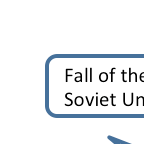Smoking
The Causal Landscape
A way to make sense of a multi-cause, indeterminate world.
Posted April 22, 2014
When we hear that an acquaintance or a celebrity has died, one of our first questions is: What happened? We expect to get a clear and simple answer, just one or two words. Cancer. Heart attack. Car accident. Stroke. We can fit the reason into the distinct categories we have learned.
But further inspection often clouds the picture. Perhaps the dead person developed cancer after years of smoking and refused to see a physician until it was too late. Did the person die from cancer, unhealthy living habits, or obstinacy? In a recent New Yorker article, Kathryn Schulz explained that death certificates include immediate cause of death (the final condition) along with underlying cause of death (any disease or injury that triggered the downward spiral). Take the cancer victim just mentioned. The immediate cause of death may have been pneumonia contracted at the end of his illness, but a physician would probably list cancer, with smoking as an underlying cause, but probably would not list the delay in coming in for a medical examination. We can now point to several triggering events — multiple causes.
Here’s another example: a fatal heart attack could be traced to unhealthy diet, genetic tendency to high cholesterol, heavy smoking, lack of exercise, failure to adhere to a statin regimen, lack of friends, lack of spouse, depression, and many other factors that correlate with heart disease. We have come a long way from the 1-2 word explanation of why people die.
The problem is that complex situations contain multiple causes for each effect — multiple paths, some intersecting, and multiple stations on each path. Yet we often want the simple 1-2 word answer. Psychotherapists regularly face the challenge of answering clients who want to know why they are depressed, or friendless, or unable to hold down a job. The client’s condition stems from multiple causes, and any attempt to pin down a neat 1-2 word explanation is bound to be misleading.
To compound this challenge, people want definitive 1-2 word answers, as if life was a series of mechanical operations and it was possible to affix blame and diagnose faults. If a copying machine jams, there is usually a mechanical reason — a sheet of paper may have gotten stuck in the assembly and once it is removed, the problem is solved. Mechanical problems like this are determinate; there is a cause and it can be identified. Yet most of our problems are not mechanical. They are not determinate. There is not a single cause. There are multiple, intersecting causes and we may never uncover some of the most important causes. We live in a multi-cause, indeterminate world and our attempts to understand why events occurred will usually be frustrating. We cannot expect specific single-cause 1-2 word answers.
Fortunately, I think there is a way to cope with all this complexity: the causal landscape. The concept of the causal landscape is to portray a wide array of causes, to help people escape from their single-cause determinate mindset, but then highlight the few causes that matter the most. These are the causes that (a) contributed most heavily to the effect (if they hadn’t occurred, neither would the effect) and (b) are the easiest to negate. When we want to take steps to prevent an adverse event, the highlighted nodes are the places to start working.
The causal landscape is a hybrid explanatory form that attempts to get the best of both worlds. It portrays the complex range and interconnection of causes and identifies a few of the most important causes. Without reducing some of the complexitywe'd be confused about how to act.
Consider the 1994 friendly fire incident in which two U.S. Air Force F-15 fighter jets shot down two U.S. Army Blackhawk helicopters in northern Iraq, killing 26 peacekeepers. That's right, the military shot down its own aircraft. The shootdown occurred in broad daylight, with no other aircraft around. And the F-15s and the Army helicopters were all being monitored by the same AWACS (Airborne Warning and Control System) airplane, which failed to prevent the fratricide. Scott Snook wrote a masterful analysis of the event in his 2002 book Friendly Fire, identifying a wide array of causes as shown in this diagram taken (with his permission) from his book. There are a lot of causes leading to the red outcome at the bottom right — too many.

So I applied the causal landscape concept and evaluated each bubble on two dimensions — the impact of the cause and the ease of eliminating it. I rated each bubble High, Medium or Low for impact (would reversing this cause have prevented the shootdown?) and High,, Medium and Low for ease (how much effort would it take to reverse the cause?). Only six bubbles were rated high on each scale, and I spotlighted these in yellow and enlarged them in the second figure. These are the leverage points for decision makers to consider in trying to prevent such accidents in the future.

Thus, there's not much we can do about some of the bubbles at the top, such as the Shrinking Defense Budget or the Changing World Order, or the Long History of Inter-Service Rivalry. Other causes, such as Few Joint Training Opportunities for Air Force and Army pilots, are difficult to alter. In contrast, the highlighted bubbles, like No Helo Reps at Weekly Coord Mtgs, are easy to remedy — just invite someone from the helicopter community to sit in on these weekly meetings. The bubble about Confusion Over Responsibility for Helicopter Operations within OPC is readily resolved by assigning someone in Operation Provide Comfort to track helicopter missions.
The friendly fire incident illustrates what a causal landscape can look like. This causal landscape format may be useful for accident investigation in domains such as aviation and healthcare. More generally, it may help people gain insights about how to navigate the multiple causes for events they care about.


